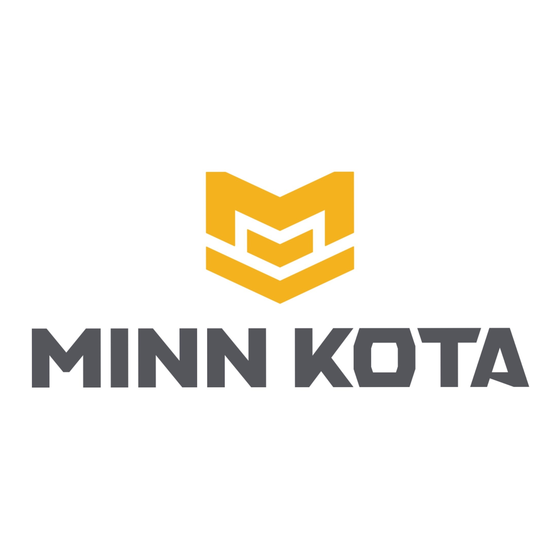
Publicité
Les langues disponibles
Les langues disponibles
Liens rapides
Caution: Always wear safety glasses and gloves. Disconnect all power to the trolling motor before beginning any work or maintenance. Johnson Outdoors Inc. is not responsible for any damage due to improper
rigging or installation. If you do not have the skills, experience and tools to perform the following maintenance and repairs, we recommend you seek the help of a Minn Kota Authorized Service Center. A list of
Authorized Service Centers can be found at www.minnkotamotors.com/service/asclocator.aspx. Or contact our Technical Service Department by email at service@minnkotamotors.com or, by dialing 800-227-6433.
Before Installing the stabilizer kit you should review your original trolling motors owner's manual and follow all recommended safety
1.
precautions. Extra care should be take on units with lift-assist feature.
2.
This Stabilizer can be mounted on either side of motor mount. Determine which side of the mount you want the Stabilizer mounted.
3.
Remove product from packaging, pull Top Cap off and un-screw Rod from Bracket.
4.
Remove the Upper and Lower Pins that attach the Bowguard 360 or Hinge and Door Base to the bow mount arms. (To remove tension on
Upper and Lower Pins, deploy motor.)
5.
Replace the Upper and Lower Pins with those supplied in this kit. One end of the Upper Pin has a longer stepped down shoulder, this end
must go toward the side that the Stabilizer will be mounted on.
6.
Place the Long Spacer on the Lower Pin and the Short Spacer on the Upper Pin. Place the spacers on the side the Stabilizer will be mounted
on.
7.
Install the Stabilizer Bracket onto the Upper and Lower Pins as shown in Fig. 1.
8.
Install E-rings on the Bottom Pin, place washers on both ends of the Upper Pin, install nuts and tighten.
9.
Place motor mount in its stowed position. Pull Bottom Bumper off Stabilizer Rod. Place the Rod next to the Bracket as shown in the Photo.
Place the threaded end down on the surface the Rod will rest on. Mark the Rod 3/4" inch above the top of the Bracket. See Fig. 2. Cut Rod to
your mark. After cutting the Rod, round the cut edge with a file or sandpaper and reinstall the Bottom Bumper.
10. Screw the Rod into the Bracket. Install the Top Cap in the threaded end of the Rod. The Rod is threaded for adjustment. Screw the Stabilizer
Rod up or down to achieve best support. Adjust the Rod to remove the load from the rear latch pin on the motor bow mount. (Note: Do not
adjust the Stabilizer Rod too high, as this will prevent the rear latch pin from latching.) After adjusting the Rod to the desired height, tighten the
Jam Nut against the bottom side of the Stabilizer Bracket to keep the Rod from turning. See Fig. 3.
11. A Velcro Strap is included with this kit. We recommend installing this Strap if your motor does not already have one. Position the Strap with the
Velcro pads towards the deck. Place Strap under Motor Rest, just in front of the rear mounting bolts. When stowing the motor pull the Strap
though the rectangular ring until snug. Then press the Velcro hook and loop pads together to secure the Strap. See Fig. 4.
P/N 2274953 Rev. 1
MKA-29 BOW MOUNT STABILIZER
P a g e
| 1
ECN ##### Date 07/14
Publicité

Sommaire des Matières pour MINN KOTA MKA-29
- Page 1 Caution: Always wear safety glasses and gloves. Disconnect all power to the trolling motor before beginning any work or maintenance. Johnson Outdoors Inc. is not responsible for any damage due to improper rigging or installation. If you do not have the skills, experience and tools to perform the following maintenance and repairs, we recommend you seek the help of a Minn Kota Authorized Service Center. A list of Authorized Service Centers can be found at www.minnkotamotors.com/service/asclocator.aspx.
- Page 2 STABILISATEUR DE MOTEUR MONTÉ À LA PROUE Avant d'installer le nécessaire de stabilisation, vous devriez passer en revue le manuel original de l’usager pour votre moteur de pêche à la traîne et en observer toutes les précautions recommandées de sécurité. Faites particulièrement attention avec les unités dotées d’une caractéristique d’assistance du soulèvement.

